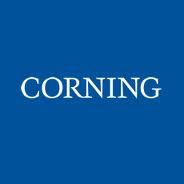 HICKORY, N.C., March 4, 2013 — Corning Cable Systems LLC, part of Corning Incorporated’s (NYSE:GLW) Telecommunications segment, will debut Optical Cables by Corning to the European market at CeBIT 2013 in Hannover, Germany, March 5-9.
HICKORY, N.C., March 4, 2013 — Corning Cable Systems LLC, part of Corning Incorporated’s (NYSE:GLW) Telecommunications segment, will debut Optical Cables by Corning to the European market at CeBIT 2013 in Hannover, Germany, March 5-9.
Optical Cables by Corning are designed to bring the benefits of optical fiber to the consumer market for the two fastest computer and peripheral connectivity protocols — Thunderbolt™ and USB 3.0. The new cables extend the data transmission range past the length limits of copper-based cables. Optical Cables by Corning are approximately 50 percent smaller and up to 80 percent lighter than comparable copper cables, while also substantially increasing strength and flexibility.
“Copper connectivity has reached its length limits, and consumers are demanding longer cables that better fit their bandwidth usage, lifestyle, and space,” said Bernhard Deutsch, vice president, Consumer Networks Connectivity Solutions for Corning Cable Systems.
“Corning wanted to free consumers from the current length barriers for Thunderbolt™ and USB connectivity while providing an innovative way to create, move, and manage their data in a much more flexible, efficient, and durable way. With Optical Cables by Corning, consumers can now live-edit video from across the length of a football pitch; download a music library up to 40 percent faster; and quickly access and connect devices to bandwidth-intensive applications with these much smaller and lighter cables,” Deutsch said.
USB 3.Optical™ Cables by Corning can reach lengths of up to 30 meters, and Thunderbolt Optical Cables by Corning can reach lengths up to 100 meters, the approximate length of a football pitch. The light weight and flexibility of the cables also make them easy to route in workspaces and convenient to pack and transport. The unique cable design and Corning® ClearCurve® VSDN® optical fiber allow the glass-based Optical Cables by Corning to be as durable as comparable copper cables.
The Optical Thunderbolt Cables provide a dual channel, bidirectional 10 Gb/s data rate with data and video on a single cable, allowing the transfer of a full HD movie in fewer than 30 seconds. The ultra-slim “zero-bend” radius cable has an electrically isolated noise-reducing design, can “daisy-chain” up to six Thunderbolt devices at the same time and is “hot swappable,” meaning it can be attached and removed without interruption to the system.
The USB 3.Optical Cables provide a 5 Gb/s data transfer rate and are compatible with USB 3.0 and USB 2.0 devices*, allowing the extension of USB device reach without additional power supply. The ultra-slim, “zero-bend” radius cable has a built-in overcurrent protection and is also hot swappable.
At CeBIT, attendees will be able to view live demonstrations related to the speed, flexibility and durability of Optical Cables by Corning. These will be held at the Corning Stand, #G42, located in Hall 17, March 5-9.
Optical Cables by Corning are targeted to be available for sale through select North American consumer electronic retail channels in the second quarter of this year. They are slated to be available worldwide later in 2013, and Corning is currently investigating potential distributors for expansion into Europe, as well as other geographies.
*This cable is designed to be compatible with devices using USB 3.0 and 2.0 interfaces.
However, the USB-IF has not yet developed a specification for optical fiber transmission.
Thunderbolt is a trademark of Intel Corporation in the U.S. and/or other countries.
About Corning Incorporated
Corning Incorporated (www.corning.com) is the world leader in specialty glass and ceramics. Drawing on more than 160 years of materials science and process engineering knowledge, Corning creates and makes keystone components that enable high-technology systems for consumer electronics, mobile emissions control, telecommunications and life sciences. Our products include glass substrates for LCD televisions, computer monitors and laptops; ceramic substrates and filters for mobile emission control systems; optical fiber, cable, hardware & equipment for telecommunications networks; optical biosensors for drug discovery; and other advanced optics and specialty glass solutions for a number of industries including semiconductor, aerospace, defense, astronomy, and metrology.
